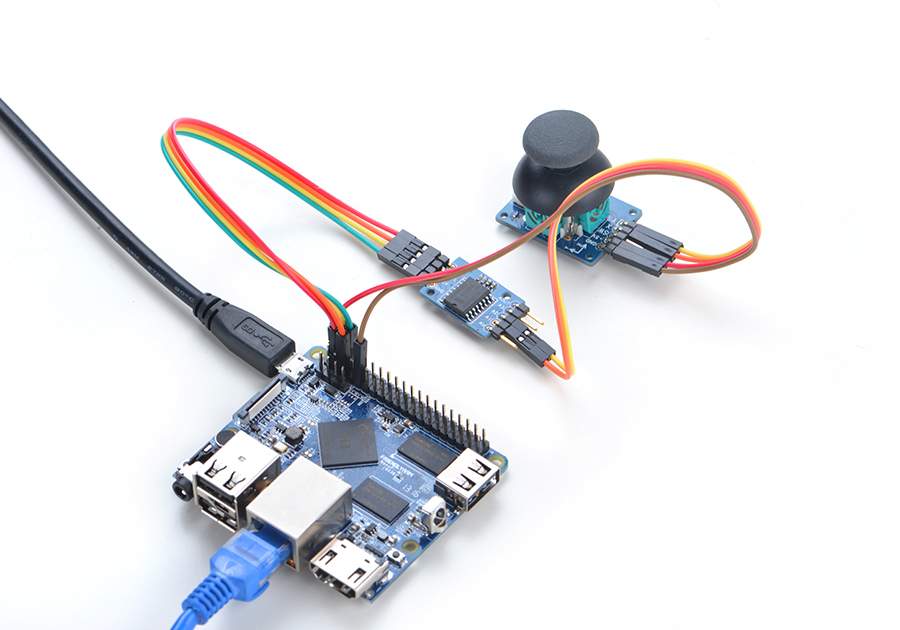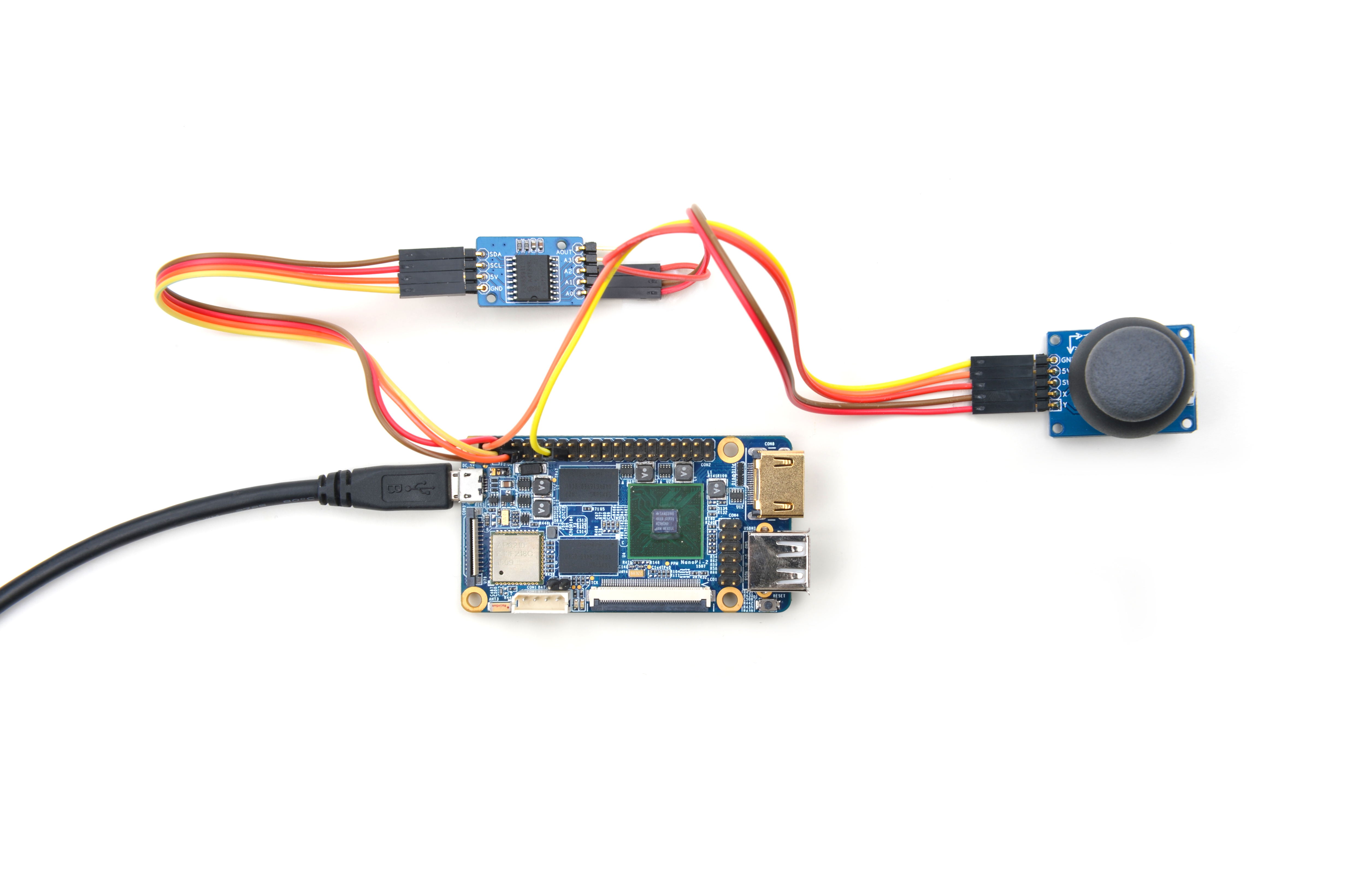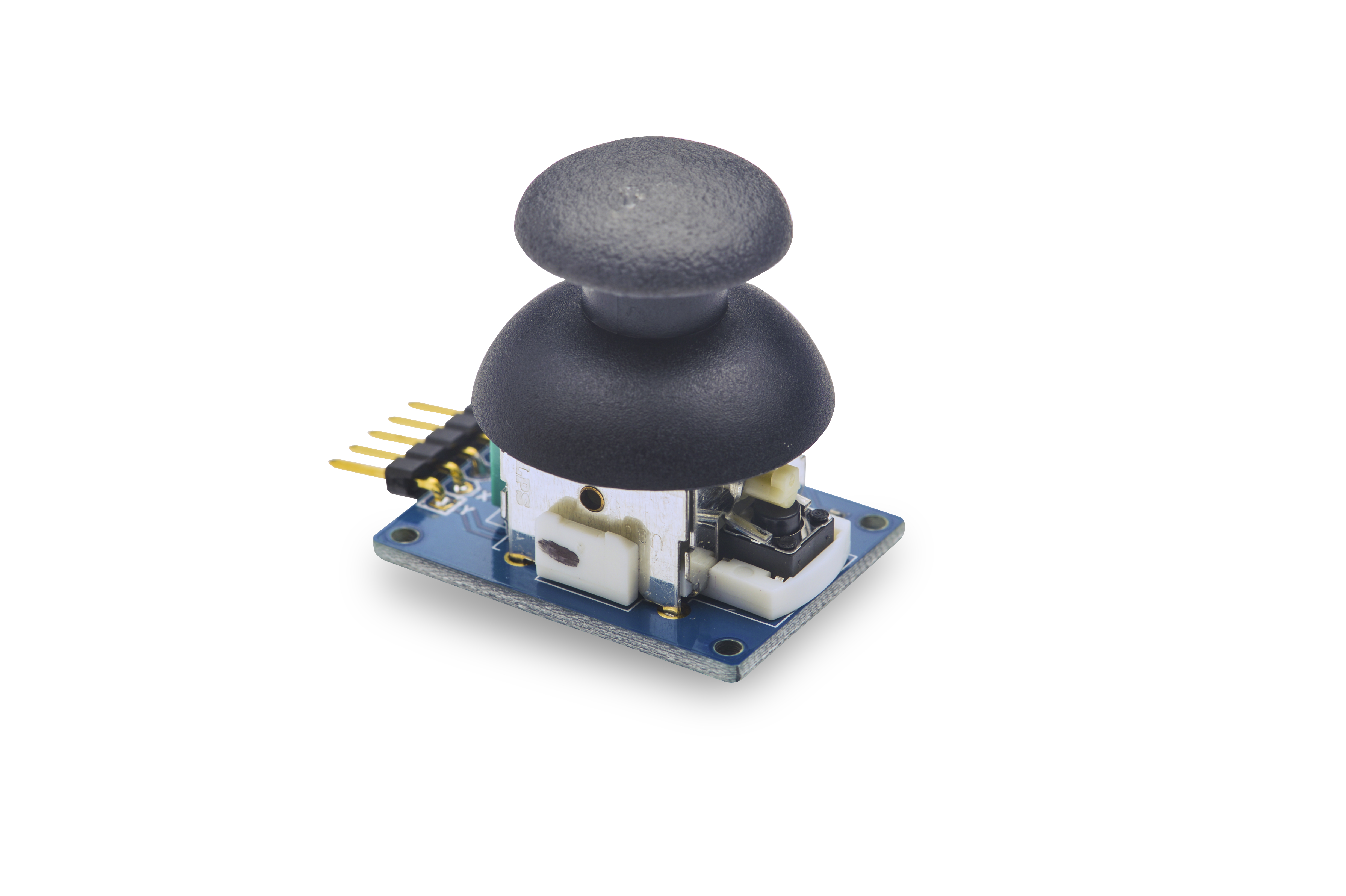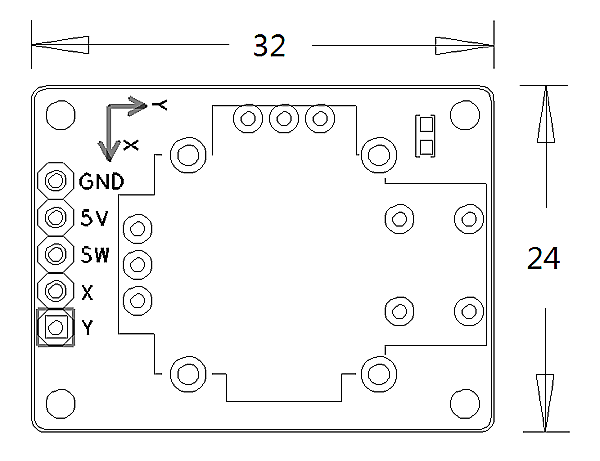Matrix - Joystick
Contents
1 Introduction
- The matrix-joystick module is a two-axis stick module. It consists of two Sliding rheostats and one button. It has two analog outputs and one digital output. Its positional states can be measured as X and Y axis values as the calibrated resistance of the two potentiometers.
- When you move the joystick the sliding rheostats' resistance will change and the corresponding x/y values will change too. When you push the joystick the SW level will turn low.
2 Features
- X and Y axis, and one button
- 2.54mm spacing pin
- PCB dimension(mm): 24 X 32
- Pin Description:
| Pin | Description |
| GND | Ground |
| 5V | Supply Voltage 5V |
| SW | Button |
| X | X Axis |
| Y | Y Axis |
3 Basic Device Operation
- It has two analog outputs and one digital output. The two analog outputs are measured as X and Y values as the calibrated resistance of the two potentiometers. The digital output is measured as Z value indicating whether or not the button is pressed.
- We extend all three outputs: X, Y and Z and users can use them easily.
4 Applications
The Matrix-Joystick module outputs analog signals which can be converted to digital signals with an ADC converter e.g. the Matrix-Analog_to_Digital_Converter.
For more details about the Matrix-Analog_to_Digital_Converter module refer to wiki: Matrix_-_Analog_to_Digital_Converter.
4.1 Connect to NanoPi M1
Refer to the following connection diagram to connect the module to the NanoPi M1:

Connection Details:
| Matrix-Joystick | |
| GND | NanoPi M1 Pin9 |
| 5V | NanoPi M1 Pin2 |
| X | Matrix-Analog_to_Digital_Converter A1 |
| Y | Matrix-Analog_to_Digital_Converter A2 |
4.2 Connect to NanoPi 2
Refer to the following connection diagram to connect the module to the NanoPi 2:

Connection Details:
| Matrix-Joystick | |
| GND | NanoPi 2 Pin9 |
| 5V | NanoPi 2 Pin2 |
| X | Matrix-Analog_to_Digital_Converter A1 |
| Y | Matrix-Analog_to_Digital_Converter A2 |
4.3 Connect to NanoPi M2 / NanoPi 2 Fire
Refer to the following connection diagram to connect the module to the NanoPi M2/ NanoPi 2 Fire:
Matrix_Joystick_nanopi_m2
Connection Details:
| Matrix-Joystick | |
| GND | NanoPi M2 Pin9 |
| 5V | NanoPi M2 Pin2 |
| X | Matrix-Analog_to_Digital_Converter A1 |
| Y | Matrix-Analog_to_Digital_Converter A2 |
4.4 Connect to NanoPC-T2
Refer to the following connection diagram to connect the module to the NanoPC-T2:
Matrix_Joystick_NanoPC-T2
Connection Details:
| Matrix-Joystick | |
| GND | NanoPC-T2 USB Host GND |
| 5V | NanoPC-T2 USB Host 5V |
| X | Matrix-Analog_to_Digital_Converter A1 |
| Y | Matrix-Analog_to_Digital_Converter A2 |
5 Compile & Run Test Program
Boot your ARM board with Debian and copy the matrix code:
$ apt-get update && apt-get install git $ git clone https://github.com/friendlyarm/matrix.git
If your cloning is done successfully a "matrix" directory will be generated.
Compile and install Matrix:
$ cd matrix $ make && make install
Run test program:
$ matrix-joystickNote: this module is not plug and play therefore before running the module please make sure it is connected to an ARM board.
Here is what you should observe:
x=1280 y=1280
When you move the stick you will see X and Y's value changes.
6 Code Sample
This Matrix code sample can work with all the ARM boards mentioned in this module's wiki. The name of this code sample is "matrix-joystick". Here is its source code:
int main(int argc, char ** argv) { int i = 0; int x, y, board; x = y = 0; if ((board = boardInit()) < 0) { printf("Fail to init board\n"); return -1; } system("modprobe "DRIVER_MODULE); signal(SIGINT, intHandler); for (i=0; i<PS2_READ_TIMES; i++) { if (pcf8591Read(1, &x) != -1 && pcf8591Read(2, &y) != -1) { printf("x=%4d y=%4d\n", x, y); } } system("rmmod "DRIVER_MODULE); return 0; }
For more details about this APIs called in this code sample refer to Matrix API reference manual
7 Resources
8 Update Log
8.1 Feb-23-2016
- Added the description for "NanoPi 2 branch" in Section 4
- Added Section 5: Connect to NanoPi 2

